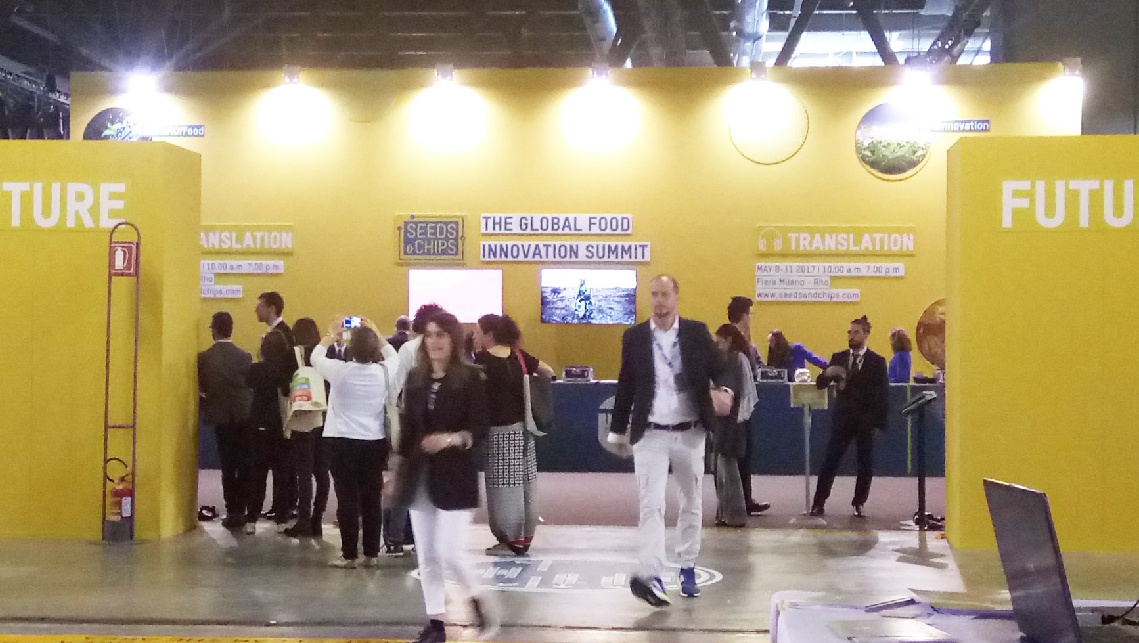Besides addressing many of these themes, the 2017 Global Food Innovation Summit also opened up several new perspectives on the world of food.
We were there. Find out what inspired us.
What consumers want
From a business strategy point of view, there are several things worth noting. First of all, we are living in the era of a more empowered consumer. Whether we want to find a good restaurant nearby, order a meal or purchase products online we have plenty of tools and devices at our disposal. The empowered consumer is a smart, connected consumer: a conscious shopper who wants to know about the items they buy and about possible alternatives. With regard to what they are putting on their plate, people desire accurate and reliable information. Providing this kind of knowledge, in the form of appropriate store labelling/signage, online content design, and data visualization, will probably become a top priority for companies at every stage of the food supply chain.

Dutch supermarket chain Ahold Delheize is making use of a particular standard in their product labelling: the “Guiding Stars”, a programme conceived and promoted by Delheize America, aiming at rating products according to their nutritional value and communicating information to shoppers by means of a simple visual language. The most nutritious products are awarded one, two or three stars, representing good, better and best nutritional value.
The second thing to point out is convenience. Companies can't ignore the fact that Millennials represent now the most important consumer cluster in terms of size and influencing power. This demographic has quite clear ideas about nutrition and cares a lot about food quality and nutritional intake. However, this same group of consumers is more price-sensitive compared to previous generations, the result of a conjunction of economic and social factors impacting on them. As a consequence, a large number of Millenials expect organic food quality at a fair price.
The crisis suffered in 2015 by major organic grocer WholeFoods may tell us something about the risks implied by non-transparent pricing strategies. That year, an official investigation accused the chain of overcharging customers by overstating the content weight of pre-packaged foods. With the brand rapidly losing credibility over its pricing strategies, the company tried to repair the damage by launching '365 by Whole Foods Market', to offer the same quality food at a lower price.
Communicating Food
To appeal to new generations of consumers, brands need to start communicating differently: in a simple, clear and engaging way.
“Food brands and food operators need to bear in mind that their products and offerings are going to be posted, shared and talked about by a wider audience. They have to offer social media-proof content”
Particularly for the youngest generations of consumers, Millennials and Gen Zs, the visual impact of brand content is crucial. For this target group, products need to be designed and offered as unique experiences which take place offline but continue to live online after consumption.
They need to be thought of in terms of social media “shareability”.

Pictures from Pescaria Facebook public page. This small Italian company manages to convert more customers through social media conversations than through any other channel, according to Facebook Country Manager Sylvain Querne.
Food bytes
Technology looks set to continue shaping consumers’ relationship with food and to profoundly disrupt the retail and the Ho.Re.Ca industries.
The adoption of sophisticated digital tools in-store permits personalized and alternative shopping experiences at different levels: we’re talking about precision retailing - selling at the right moment, to the right customer, leveraging the knowledge which data can provide about that customer.
Hong Kong based Bite, for instance, provides restaurants with self-ordering intelligent kiosks, which are able to keep track of each customer and their interactions and choices. By means of the information they collect, they know everything about customers' preferences and allow restaurants to plan offerings accordingly.
Precision retailing is also something grocers are keen to invest in. Powerful software, such as SAP-HANA, is able to gather a lot of information at the point of sale and to process it in real time, allowing digital marketing applications to run instant promotions to target individual customers at the point of sale.
Imagine you are picking up a bottle of milk from a refrigerated display at your local supermarket. There is a digital sensor placed near the fridge. The bottle triggers the sensor as you walk by. Your mobile pings and you find an instant promotion of your favourite brand of breakfast cereals, which you may want to consume with the milk you have just selected. This scenario could become ever-more common as grocers try everything to survive in an era of fickle customers.







